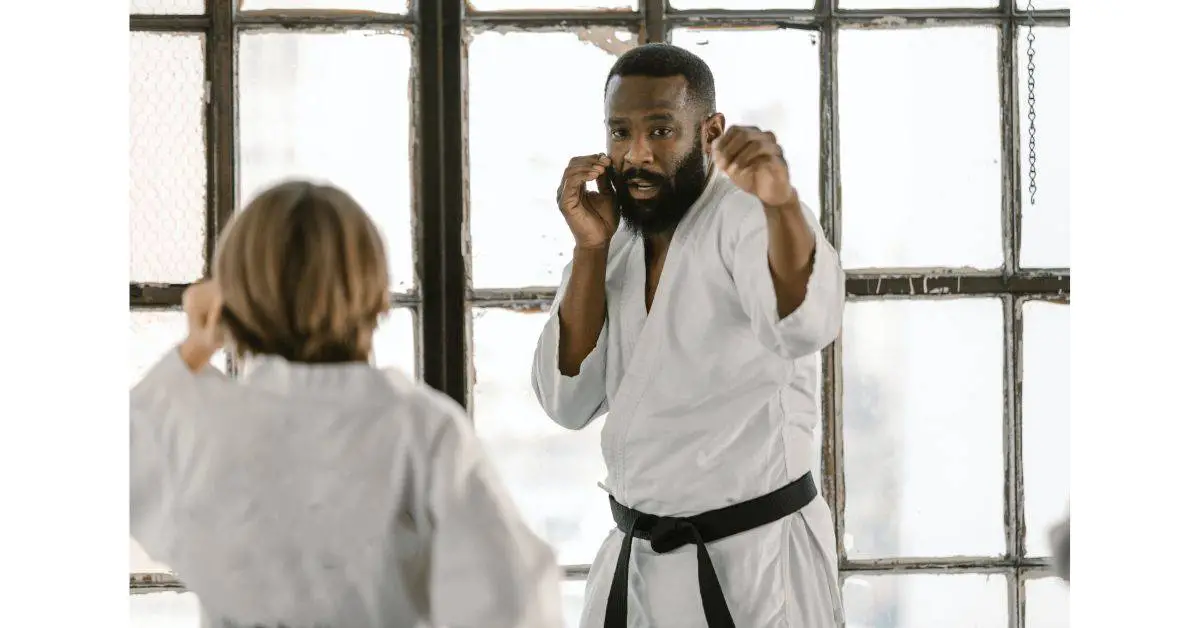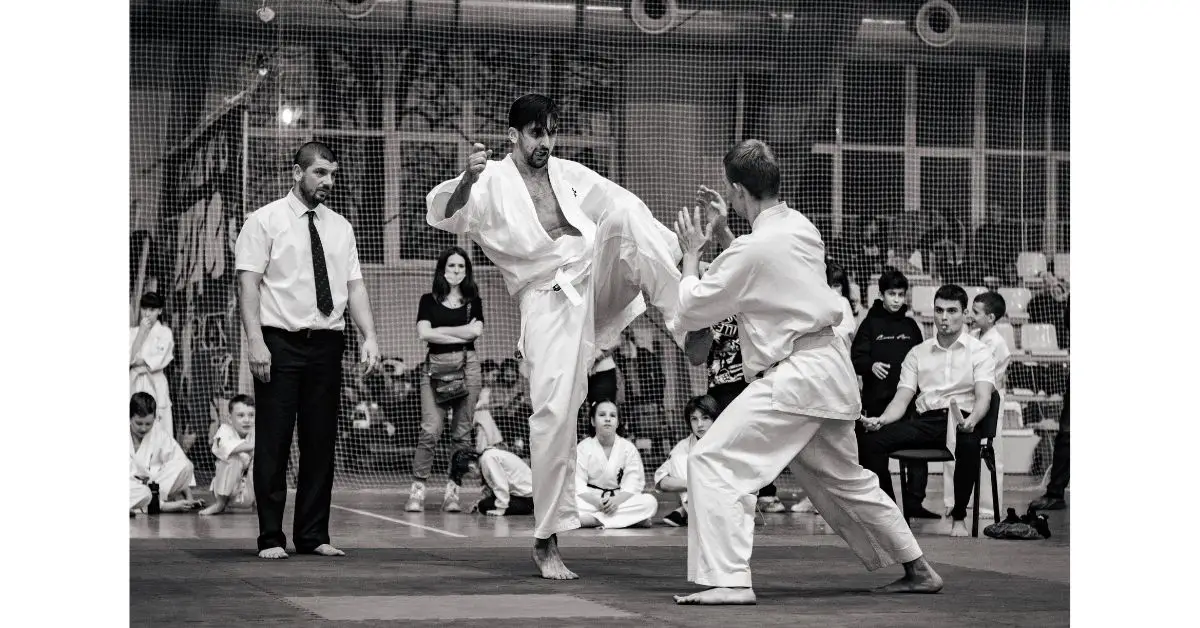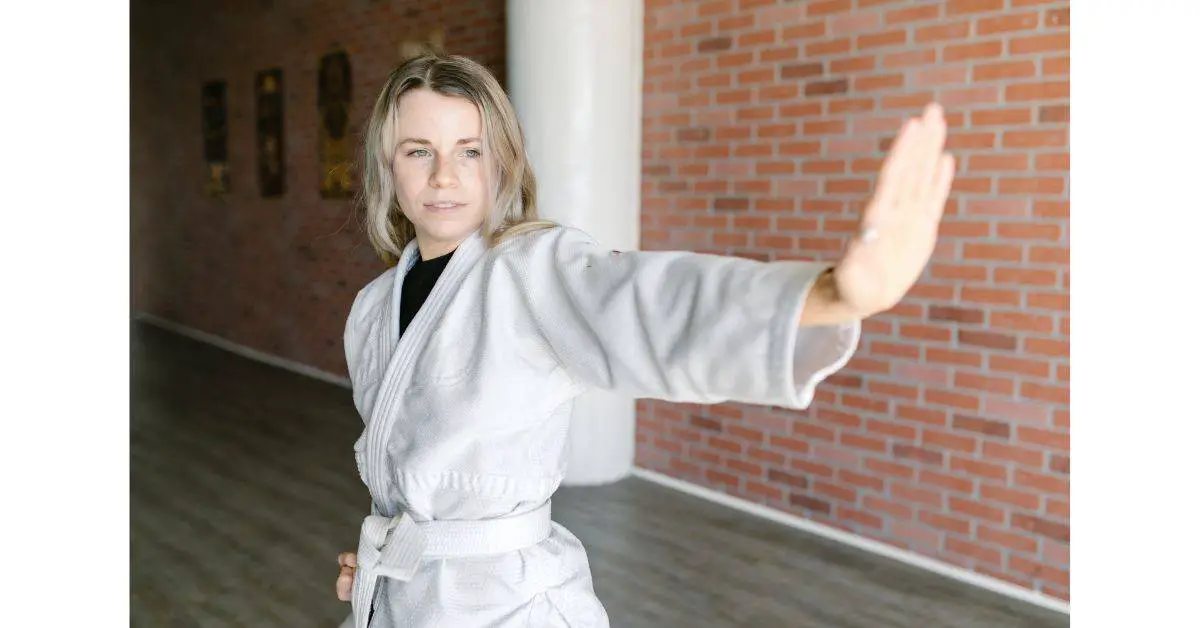Karate has evolved to have a myriad of styles over the years. The four prominent styles of Karate are Shotokan Ryu, Shito Ryu, Wado Ryu, and Goju Ryu. Other styles that exist form their foundation from these four main styles of Karate. Which begs the question, which is the most acclaimed style of Karate?
The most popular style of karate is Shotokan Ryu. Gichin Funakoshi developed this traditional style from different martial arts. It is popular for its long wide deep stances, linear techniques, and efficient direct strikes using feet, hands, knees, and elbows. This style exudes power, speed, strength, and mobility.
Shotokan style is a weaponless form of martial art that creates its basis on the main techniques of blocking, striking, kicking, and punching. Deeper in Shotokan lies training that handles character development.
The notion of Karate styles is interpreted as how one chooses to convey their karate. Therefore, when selecting the best style of karate to learn, one looks at the practicality, functionality, and desired effect.
Why is Shotokan Karate the most popular?
Shotokan Karate is one of the most influential styles of karate in the world. Why did Shotokan gain more favour than other styles of karate?
Shotokan Karate became popular through the media on television and blockbuster movies. Shotokan was also known as an effective method of self defense. People found it safe, efficient and easy to learn. Shotokan became popular because of the diversification of its style.

In history, Shotokan Karate became popular after Funakoshi got the opportunity to perform a public demonstration at the largest martial arts center called Kodokan and later stage Karate to the Japanese crown prince. As the ambassador of Karate, Funakoshi pushed for Karate to be included in schools and universities via clubs, thus increasing its demand.
The creation of the Japan Karate Association (JFK) in 1948 by Funakoshi also led to the spread of Shotokan. In the present day, it has become an international establishment, with dojos all over the map. Since then, many other associations have been formed to offer Shotokan training grounded on Funakoshi’s teachings.
In 1950-1960, American television involved Karate, leading to the popularity of Karate in the West. Blockbuster movies were created on Karate in the 1980s, increasing the spread of karate to the world, till the present day.
A karate community was formed and competition amongst dojos began, leading to Karate being recognized as a sport. This has popularized Karate all around the world, with people participating in the sport.
The History of Shotokan Karate
Shotokan did not rise to fame at inception, but rather gradually grew its reach. Examining the history of karate can enable one to understand this concept.
Gichin Funakoshi developed Shotokan Karate in the 18th -19th century from a variety of martial arts, on the major islands of Japan. Funakoshi wanted to develop a straightforward style that would be a blend of hard and soft techniques that originated from Okinawan styles and Japanese martial arts.

This history began when Japan added the Okinawa Islands to their territory by appropriation, forcing people to migrate to the main islands of Japan. Funakoshi also migrated on a quest to spread knowledge of karate. He was trained in two ancestral schools, namely: Shorin Ryu and Shorei Ryu.
Funakoshi was working towards creating his new style and later on, he opened a dojo at Mejiro in 1936. Funakoshi used to jot down philosophical writings, poems, and messages to his students, using” Shoto” as his pen name.
Funakoshi’s students would then later engrave a sign at the doorway of their dojo in honor of their master. The name, “Shoto” to mean pine waves and “Kan” to mean house, gained favor amongst the people who called his style Shotokan karate.
During World War 2 in 1945, an allied bombing occurred in Mejiro, which led to the destruction of Funakoshi’s dojo and the death of his son.
In 1949, Funakoshi’s senior students led the Japanese Karate Federation while he was still a chief instructor emeritus due to his old age. Funakoshi died in 1957 and Masatoshi Nakayama took over as chief instructor of the association.
With the close help of Isao Obata and Hidetaka Nishiyama. The association was dedicated to education, research, and promotion. Nakayama sent Teruyuki Okazaki to the United States to spread the teachings of Shotokan karate around the world and establish more dojos.
Okazaki created the International Shotokan karate federation (ISKF) to offer training based on master Funakoshi’s teachings.
What Makes Shotokan Karate Unique?
Shotokan sets itself apart from other styles, subject to its techniques, and here is why.
Shotokan karate is unique for its long wide stances and linear techniques that provide steadiness, robust movements, and sturdiness of the feet. It’s dynamic as it establishes anaerobic techniques and speed. The objective of Shotokan is to stop the opponent instead of injuring them as done in other styles.
The characteristics of Shotokan
1. Kata– This refers to the patterns and forms of Karate. Traditional Shotokan Karate has katas and bunkai, which teach the learners how to exercise Katas in real life.
2. Kumite- This refers to sparring techniques, which involve students engaging in a spar, involving grappling, and striking. This includes administering kihon and kata to opponents.
3. Kihon -This refers to the basics of Shotokan. Which include: punches, stances, kicks, and blocks.
Funakoshi wrote the philosophy of Shotokan by outlining the basis of the art, namely the “twenty essentials of Karate” (“Niji Kun”) which are based on Zen and bushido. Funakoshi believed that through the observation and practice of the twenty principles, the student would improve their self-development.
There are 5 philosophical rules when training in the dojo, which are referred to as the “dojo kun. Some Shotokan clubs recite the dojo kun at the beginning or end of class to get motivated.
The five philosophical rules of the dojo kun.
- Respect one another.
- Be faithful
- Endeavor to succeed
- Refrain from violence
- Good character
Is Shotokan Karate effective for self-defense?
This solely depends on the style of Shotokan Karate being discussed. The traditional style of Shotokan focuses on teaching self-defense tactics that are effective in life-threatening situations.
Shotokan karate is effective for self-defense as it consists of constructive fighting techniques namely Kumite and bunkai that are applied in real-life situations. Shotokan is effective as it focuses on disarming the rival as opposed to injuring them. A practitioner of Shotokan can triumph over a fight in seconds.

Shotokan ensures self-defense is fostered in the student by giving the following effects.
- It will improve physical shape. Shotokan exercises increase physical strength by nourishing the torso, legs, and hands.
- It improves mental development. Shotokan techniques enable one to control and understand their body.
- It instills the techniques naturally to the student. Shotokan gives the student speedy reflex attacks carried out without thought, thus overpowering their opponent fast.
- It teaches the necessary techniques needed in self-defense, such as avoiding strikes and foot sweep attacks. It educates on the crucial part to attack the adversary’s body, such as double arm strikes.
Nevertheless, the pupil will need to go through Shotokan training until completion to have unbeatable self-defense.
Final Words
All styles of karate have innumerable benefits to the learner, but Shotokan is outstanding as it aims at improving character development.
Shotokan is efficient in self-defense as it teaches open wide range techniques as opposed to close-range techniques in other styles of Karate.
If this is your desired effect, Shotokan is the best style for you! Join a Shotokan training and witness yourself go to greater heights of self-actualization.

